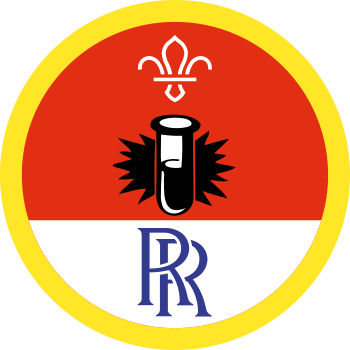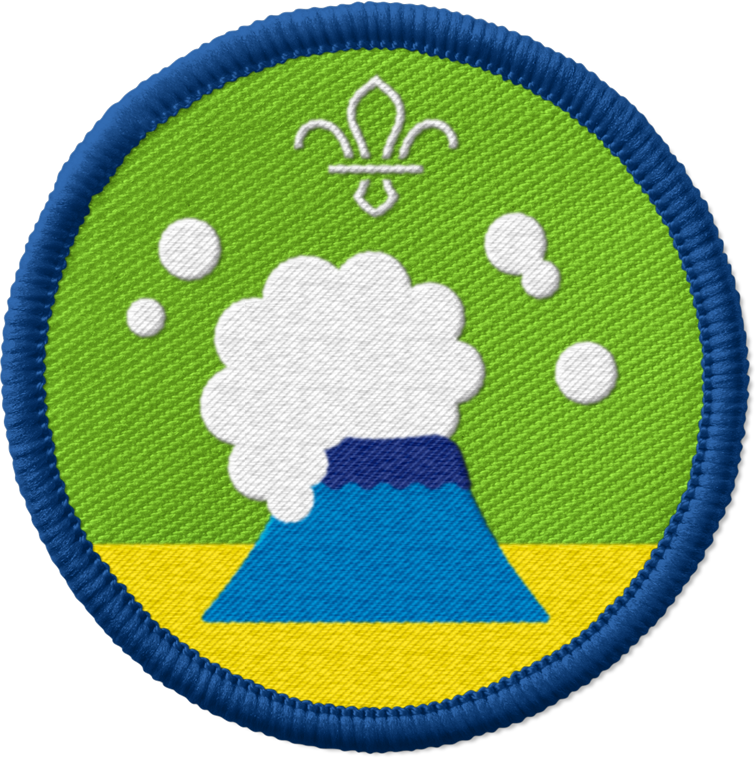Make eco-friendly slime
You’ll need
- Food colouring
- Measuring jug
- Large saucepan
- heatproof whisk
- Heatproof bowl
- Tablespoon
- Ground psyllium husks
- Hub (or microwave)
Before you begin
- Use the safety checklist to help you plan and risk assess your activity. Take a look at our guidance to help you carry out your risk assessment, including examples.
- Make sure all young people and adults involved in the activity know how to take part safely.
- Make sure you’ll have enough adult helpers. You may need some parents and carers to help if you’re short on helpers.
- Check for allergies, intolerances, fasting, food-related medical conditions, eating disorders, food sensitivities or dietary requirements, then adjust the food items used as needed. This may include making sure there’s no cross-contamination of packaging and no cross-contamination during the storage, preparation, cooking and serving.
- You may need to use separate chopping boards, equipment and utensils, such as tongs or toasters, for different dietary requirements, allergies and foods.
- If you’re unsure, check with the young person and their parents or carers. You can check with the adult directly if it’s a volunteer or helper.
- Some people may not like certain food textures or tastes and that’s OK. People don’t need to use all the ingredients if they don’t want to, and no-one should be made to try foods if they don’t want to. You can try to find an alternative for them.
- Take a look at our guidance on food preparation.
- You could run our kitchen hygiene activities before this session.
- Always have a hand washing station, washing hands regularly throughout this activity, and taking extra hygiene precautions when handling food. If you're using gloves to prepare food, treat them like your hands. Wash any gloves before using them and in between if necessary.
- Spray and wipe down all working surfaces and tables with anti-bacterial spray before and after use, and wash any equipment you’re using in hot soapy water.
- Take extra hygiene precautions when handling raw meat, such as regular hand washing.
- Keep raw and ready-to-eat foods separate, having separate equipment for raw and cooked meat, and washing up equipment as soon as it's been used.
- Make sure food is properly cooked before you serve it. Always cut through poultry and meat to make sure it's fully cooked, especially when barbecuing food. Make sure it's cooked slowly and thoroughly, and not just done on the outside.
- Always follow cooking instructions and never use food past its use-by date.
- Keep food out of the fridge for the shortest time possible.
- At the start of this activity, remind everyone of kitchen or indoor cooking safety rules and how to act safely. Always tie hair back, tuck in neckers and loose clothing, and wear closed toe shoes. Take a look at our kitchen safety tips.
- You may want to run a demonstration on how to use the equipment safely, such as for cooking or chopping ingredients. You could use our kitchen safety activities before this session.
- Make sure any cooking equipment or heat sources, such as ovens and hobs, always have adult supervision, including during free time and arrival times. If anyone struggles with sensing danger, you should consider providing extra adult supervision. This could be especially helpful at unstructured times, such as breaks or waiting to cook.
- Remind everyone to keep their fingers away from any knives. You may want to use blunt, child-friendly knives, or you could also have ingredients pre-chopped.
- If you’re using a gas stove, tabletop hob plates or a mini oven, make sure it’s on a stable heatproof surface and in a clear and open area, with plenty of ventilation. Gas appliances and sources can increase risk of carbon monoxide exposure. Take a look at our guidance on different cooking methods and carbon monoxide.
- You may want to put child-safe locks on cupboard doors to prevent access by young people, especially for cupboards containing matches, cleaning products or chemicals.
- People can work in small groups or as a whole group to bake or cook. Each group should have adult supervision.
- You may want to be in groups, but everyone to use the same cooking source, rather than having each group have their own.
- You may wish for groups to make or prepare the ingredients in a wider, more spacious area, then invite each group into the kitchen to cook one at a time.
- Remember the groups not using the kitchen or cooking will still need to be supervised, always following the Yellow Card.
- Make sure you have all the ingredients ready. You may want to pre-chop or pre-measure some activities.
Planning and setting up this activity
- You may want to run this experiment as one of a few bases, especially if you don’t have enough hobs or space for everyone to do this at once. If you’re running two or three experiments at the same time, put the equipment each needs on a table and make sure there’s an adult at each table.
Make the slime
- Get everyone into small groups. Each group needs an adult and access to a hob.
- Each group should measure 220ml of water and pour it into a large saucepan.
- They should add two tablespoons of ground psyllium husks to the water. Using psyllium husks makes non-toxic slime.
- They should add food colouring drop by drop until the mixture is the colour they want.
- An adult should help the group put the pot on a hob and gently heat it, stirring continuously.
- The mixture shouldn’t take long to thicken, so with the help of the adult, the group should watch it closely and turn off the heat when it reaches a slimy consistency. An adult volunteer should take the pan out off the hob using protective equipment, then place it on a safe, heatproof surface to cool down, out of the reach of young people.
- If you’re using a microwave instead, mix the ingredients into a microwave-safe bowl. Place it in the microwave and heat it for between 5-7 minutes. Watch it closely, as the slime can easily overflow. Stop the microwave whenever you see the mixture begin to bubble excessively. An adult volunteer should take the bowl out of the microwave using a tea towel or oven glove, then place it on a safe, heatproof surface to cool down, out of the reach of young people.
Get gooey
- Once the slime has cooled down, everyone should divide the slime between the group members. People could try squeezing, shaping, and pulling their slime.
- Groups could share and compare their slime. Some will probably be runnier and others will be thicker. People should talk about why, and how changing the amount of different ingredients may change the slime.
Reflection
This experiment needed everyone to use science skills such as following instructions and making adjustments based on what they observed. Everyone should talk about how they made the slime and the different ways it changed as it cooked and cooled. What was it like watching the watery mixture turn to slime – was it what people expected to happen? Did anyone add more water or psyllium husks as their mixture heated to make it thinner or thicker? Can anyone think of any other ingredients or mixtures that change when they’re heated? People may think about ice melting, or custard powder and water thickening. People may even think about how jelly dissolves in hot water then sets to be wobbly!
Safety
All activities must be safely managed. You must complete a thorough risk assessment and take appropriate steps to reduce risk. Use the safety checklist to help you plan and risk assess your activity. Always get approval for the activity, and have suitable supervision and an InTouch process.
- Science
Supervise young people, and only do science activities that are advised and age appropriate for your section. Test activities first, to make sure you’re confident you can lead them safely. Use protective clothing where necessary.
- Food
Remember to check for allergies, eating problems, fasting or dietary requirements and adjust the recipe as needed. Make sure you’ve suitable areas for storing and preparing food and avoid cross contamination of different foods. Take a look at our guidance on food safety and hygiene.
- Cooking
Teach young people how to use cooking equipment safely. Supervise them appropriately throughout. Make sure it’s safe to use and follow manufacturers’ guidelines for use.
- Experiment with different amounts of different ingredients to create runnier or stickier slime.
- You could create sensory slime by adding fragrances to the mixture before you heat it. You could also knead cake decorations (such as hundreds and thousands or silver balls) into cooled slime.
No one has to touch the slime if they don’t want to – they can still help add the ingredients, describe what happens, and see what the slime looks like. You could also offer gloves for anyone who doesn’t want the slime to touch their skin.
All Scout activities should be inclusive and accessible.


